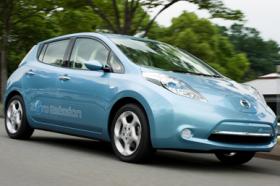Tipping point for electric vehicles

Why has the Alliance committed itself to leadership in electric vehicles ahead of hybrids or other alternative forms of future propulsion? Well simply, because EV’s are the most mature form of technology that allows us to reach zero emissions and delight the customer. The technology, even as it exists today will be more than ample for most drivers, although I must admit there will need to be a change in mindset to conquer what is now being called ‘range anxiety’. The battery in the Nissan LEAF is already good for 160km a day between charges (typical LA driving mode), far more than the daily needs of 80 per cent of motorists. Beyond the comparison with alternative forms of propulsion, when customers realise that EV’s can save them money on running costs; don’t ever need to visit a filling station, are fabulously fun to drive thanks to “on-demand torque” and a very low centre-of-gravity; and are silent; I believe the market will tip in the same way that the market for diesel cars tipped in Europe 15 years ago. We’re at a pivotal moment.
But having the technology is not necessarily a guarantee of success; we also need to assure full charging infrastructure availability. That’s one of the reasons we have been so pleased by the response of numerous governments and power generating companies to our plans – installing charging networks is absolutely vital for the success of EVs. Also imperative in the short term while the technology is maturing, are government incentives for people to buy electric vehicles. This allows LEAF to be sold at a price that is competitive with diesel and petrol engine family cars in most countries. To be specific, LEAF will be sold in the USA for less than $33k MSRP. When you combine the $7.5k federal incentive, the customer will see a real sales price of less than $25.5k. When turned into a monthly lease price, this means LEAF is cheaper than say, a Honda Accord.





Post new comment